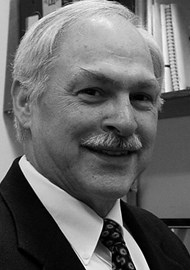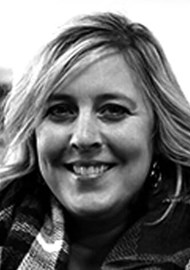
As automated audiometry becomes more widespread for busy clinics and tele-audiometry, Laura Prigge from GSI interviews Dr Robert Margolis to discuss his automated method for testing auditory sensitivity (AMTAS®).
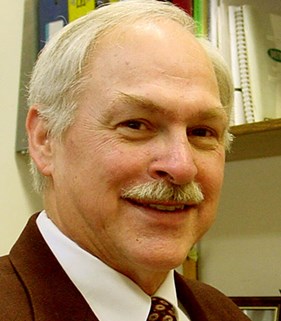
What motivated you to think of automated audiometry?
When I was the director of the University of Minnesota Hospital Audiology Clinic, I was dissatisfied by the amount of time my highly-trained, competent staff was spending doing pure-tone audiometry which occupied more of their time than any other billable activity. Two experiences solidified my belief that this was an inappropriate use of professional time. I performed a hearing evaluation on a highly-educated professional man who, after watching me through the window of the sound booth, said “why do you have to push those buttons?” It was obvious to him that the procedure was perfectly amenable to automation. Why was I pushing those buttons when Wayne Rudmose said in 1963: “The number of audiometric examinations made today has grown to such a magnitude that it is only natural that some of the techniques of measurement should become automated” [1].
“Increasing access to hearing testing has become my major goal in developing automated tests”
Not long after that I had an unpleasant meeting with the hospital director who questioned whether my staff was productive enough. When I pointed out that they typically were in the clinic until 6pm and then took reports home to write, she offered, “maybe you need to automate some of those procedures”.
Since that time, I have looked outside the walls of the clinic. In the US, the number of hearing tests that can be conducted by all the audiologists is less than half of the need [2]. Most countries don’t have any audiologists. Increasing access to hearing testing has become my major goal in developing automated tests.
How does automation help audiologists?
Automated audiometry helps audiologists by allowing more efficient use of their time, increasing the accuracy and repeatability of test results, and standardising our test methods. Perhaps more importantly, automation helps hearing-impaired people by increasing access to audiology services.
How can audiologists trust the results?
Over time, audiologists become very good at assessing the quality of their test results and modifying their technique to ensure accuracy. The information they use to determine accuracy can be incorporated into an automated test and then the computer can do it better than a human. We developed a method for assessing the quality of automated test results that statistically estimates the accuracy of the test [3]. Computer programs for measuring auditory thresholds have been around since the 1960s. When you take the audiologist out of the procedure, it is not the process of selecting and presenting stimuli that is lost, it is the expertise of the audiologist for ensuring accuracy. Quality control is a critical feature of automated clinical tests.
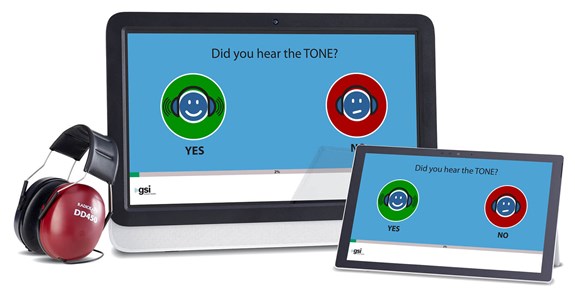
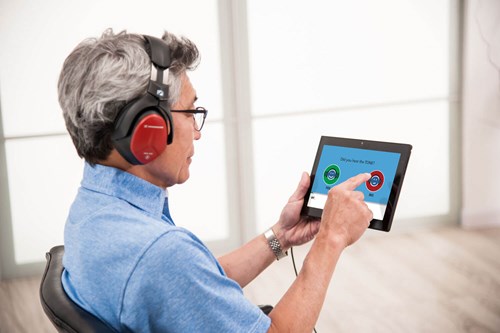
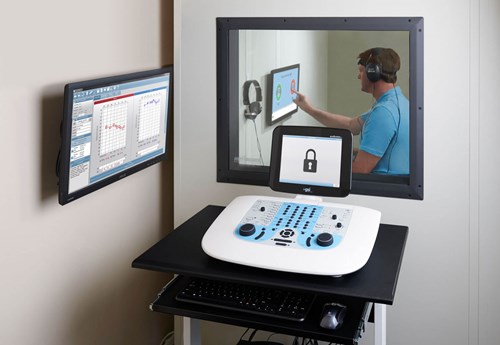
How does the audiologist build rapport with the patient if he or she isn’t doing the pure tones?
That’s a riot. One of my favourite audiologists told me that manual pure-tone audiometry is important for building rapport with patients. My experience has been when I put someone in a metal room, close the doors, watch them through a dimly lit window, and ask them to listen to sounds they can barely hear, I don’t make any friends. I have to build rapport in other ways.
“By automating basic testing, audiologists’ time can be focused on activities that require advanced skills”
Has automated audiometry been evaluated in real-world situations?
Automated audiometry trials have been conducted in a variety of clinics in at least four countries and in the homes of hearing-impaired people. There is a growing literature that establishes the validity of automated tests.
How was the development of automated audiometry funded?
Some equipment manufacturers developed automated protocols for pure-tone audiometry internally. That kind of development is proprietary, and manufacturers usually don’t share their validation methods and results. AMTAS® was developed with funding from the US National Institutes of Health and the US Department of Veterans Affairs. Validation methods and results are published in the audiology research literature.
Can you bill for automated hearing tests?
In 2010 the Centers for Medicare & Medicaid Services (CMS) established Category III CPT codes for automated hearing tests (pure-tone and speech audiometry). Category III codes (sometimes called t-codes) are for emerging technologies. It is legal to bill using Category III codes but they may not be reimbursed. The Category III codes for automated audiometry are scheduled to be sunsetted in 2026. There is an effort under way to convert the Category III codes to Category I codes.
What is the business case for using automated tests if they are not reimbursed?
Clinics should analyse the costs and revenue associated with their services. With the low level of reimbursement for pure-tone audiometry, and the cost of clinicians, the personnel costs probably exceed the revenue. It is not cost effective to use practitioners’ time to perform routine tests that can be automated if the reimbursement doesn’t exceed the cost of the professional time. That time can be used more profitably for clinical services that require the skills of audiologists.
What other audiologic tests can be automated?
Some already are. The first clinical instrument for tympanometry required the user to set the ear canal air pressure manually and acquire the tympanogram point by point. It was quickly automated (without a peep from the audiology community). Several electrophysiologic tests are automated or semi-automated. Automated speech recognition tests have been developed and validated. Speech recognition thresholds and word recognition scores can be obtained by an automated forced-choice procedure that requires the patient to select the response from a set of alternatives presented visually. The test scores differ from those we obtain with open set tests because chance performance is one over the number of alternatives (25% if there are four alternatives). Forced-choice tests have been around for decades and are a perfectly legitimate way to measure speech recognition ability but require different interpretation guidelines than our usual open-set tests.
“It is important that we establish the value of automated tests and establish audiology as the profession that is best able to interpret the results and formulate treatment plans”
If Rudmose said we should automate our hearing tests in 1963, why has it taken so long?
When I started working on automated hearing test in 2000, I was shocked at the resistance from many audiologists. I expected audiologists to see what my patient and hospital administrator saw – an opportunity to move our profession forward with technology. Some sources of that backlash are:
- Fear of losing audiology jobs. We published our analysis of the capacity and need for hearing testing to address this fear [2]. In 2000, all the audiologists working full time on basic hearing testing could not deliver half the need. That gap will continue to increase at the baby-boomers age.
- Fear of giving up an important part of our scope of practice. When I started this work, the AuD conversion was just beginning. We need to view our roles like other doctors. By automating basic testing, audiologists’ time can be focused on activities that require advanced skills.
- Reimbursement. Although the costs of performing basic tests by practitioners usually exceeds the reimbursement, clinicians are reluctant to perform clinical procedures that are not reimbursable. It is important that we establish the value of automated tests and establish audiology as the profession that is best able to interpret the results and formulate treatment plans.
- Training programmes. Our clinical training programmes have been slow to incorporate teaching of the methods and advantages of automation.
- Inertia. In every profession there is a reluctance to change methodologies especially when current methods produce the needed results. There is an interesting parallel with optometry, a profession that is transitioning to automated tests faster than we are. The refraction needed in our lenses is being determined entirely by physical measurements, abandoning the ‘which is clearer, this or this’ procedure (although some optometrists are reluctant to change, just like us.) One of the reasons for the change in optometry is the finding that manual testing requiring subjective responses is subject to bias, which has also been shown to be the case in audiometry [4,5].
References
1. Rudmose W. Automatic audiometry. In: Jerger J (Ed.). Modern Developments in Audiology. New York, USA; Academic Press; 1963:30-75.
2. Margolis RH, Morgan DE. Automated Pure-Tone Audiometry: An Analysis of Capacity, Need, and Benefit. Am J Audiol 2008;17(2):109-13.
3. Margolis RH, Saly G, Le C, Laurence J. Qualind: A Method for Assessing the Accuracy of Automated Tests. J Am Acad Audiol 2007;18(1):78-89.
4. Margolis RH, Wilson RH, Popelka GR, et al. Distribution characteristics of normal pure-tone thresholds. Int J Audiology 2015;54(11):796-805.
5. Margolis RH, Wilson RH, Popelka GR, et al. Distribution Characteristics of Air-Bone Gaps: Evidence of Bias in Pure-Tone Audiometry. Ear Hear 2016;37(2):177-88.
For more on this topic, see Use of automated audiometry
or faster patient access to audiology services?

